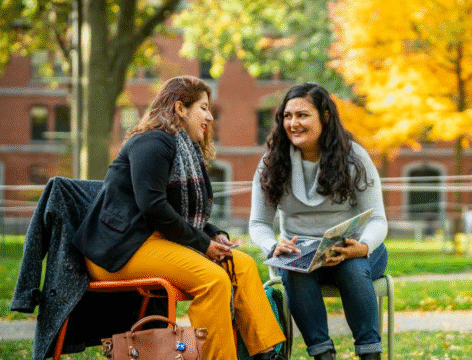Life as a student in the United States can be a thrilling blend of academic challenges and personal growth, but it also comes with its share of stress. Between demanding coursework, extracurricular activities, and the social opportunities that college life offers, finding a balance between study and fun is essential for both success and well-being. Achieving this balance doesn’t require drastic changes or rigid schedules. Instead, small, consistent strategies can help students enjoy their time while staying productive.
A good starting point is time management. College students often find themselves juggling multiple classes, assignments, and part-time jobs. Allocating time intentionally can make a big difference. One practical approach is to create a daily schedule that highlights both academic responsibilities and leisure activities. Rather than cramming all work into long stretches, breaking study sessions into focused intervals allows the mind to stay fresh. Incorporating short breaks between sessions is equally important. These moments provide mental rest and give students the opportunity to engage in enjoyable activities such as a quick walk, a coffee break with friends, or listening to music.
Setting clear priorities is another key strategy. Students may feel pressured to attend every social event or join every club, but understanding personal goals helps in making thoughtful decisions. Academics should remain a primary focus, yet it is equally valuable to maintain social connections and explore hobbies. Balancing these priorities requires reflection. Students who regularly evaluate what matters most to them are more likely to experience satisfaction and avoid feeling overwhelmed. Journaling or maintaining a planner can help track responsibilities and progress while highlighting time available for fun.
Physical activity plays a surprisingly influential role in balancing study and leisure. Exercise not only promotes physical health but also improves concentration, mood, and energy levels. Simple routines such as jogging, yoga, or biking can fit into a daily schedule without consuming excessive time. Even casual participation in intramural sports or fitness classes offers a chance to connect with peers while staying active. Integrating movement into the day ensures that students do not burn out from long hours of study and also provides a natural transition into recreational time.
Nutrition and sleep are foundational elements that support both mental and emotional balance. A healthy diet fuels the brain, making study sessions more productive, while sufficient rest allows students to engage fully in social and recreational activities. Maintaining regular sleep patterns can be challenging with varying class schedules and social events, but aiming for consistent sleep routines helps prevent fatigue and stress. Similarly, mindful eating, such as choosing balanced meals and snacks, sustains energy throughout the day and reduces the temptation to rely on caffeine or sugary foods as quick fixes.
Another valuable approach is combining social activities with personal interests. Exploring hobbies or attending cultural events can serve as both enjoyable experiences and educational opportunities. Students in the U.S. have access to diverse activities, from music festivals and art exhibitions to volunteer work and campus clubs. Participating in these activities provides a break from academics while still fostering personal development. Forming study groups that double as social gatherings is another way to blend work and fun. This allows for collaboration on assignments while also creating an environment that encourages laughter and connection.
Technology, when used wisely, can also support a balanced lifestyle. Productivity apps, digital calendars, and reminders help students stay organized and ensure they do not overlook important deadlines. However, it is essential to manage screen time effectively. Excessive use of social media or streaming platforms can encroach on both study time and quality leisure experiences. By setting boundaries, such as designated periods for relaxation online and focused offline study, students maintain control over their routines while still enjoying entertainment.
Mindfulness and self-awareness are crucial components of achieving balance. Taking time to reflect on how one feels mentally and emotionally can guide better decision-making. Techniques such as meditation, deep breathing exercises, or simply pausing to evaluate stress levels can help students recognize when they need to shift focus between study and fun. Being mindful of energy levels, emotional state, and workload enables students to make informed choices about when to rest, socialize, or engage in learning activities.
Financial mindfulness also plays a subtle yet significant role. Balancing study and fun often involves budgeting for leisure activities, food, and personal expenses. Being aware of financial limitations helps students plan activities that are both enjoyable and sustainable. Many universities offer free or low-cost entertainment, workshops, and events that allow students to engage socially without overspending. Strategic financial planning ensures that leisure activities do not become a source of stress, keeping the balance intact.
Finally, embracing flexibility is essential. Life as a student is inherently unpredictable, and rigid routines can sometimes create pressure rather than relief. Accepting that certain days may demand more study while others offer opportunities for socialization helps maintain a realistic perspective. Flexibility also encourages spontaneity, which can lead to memorable experiences and meaningful connections. By learning to adjust plans without guilt, students cultivate a mindset that balances responsibility with enjoyment.
In conclusion, balancing study and fun as a student in the United States is a dynamic process that involves thoughtful planning, self-awareness, and intentional decision-making. Time management, prioritization, physical activity, nutrition, social engagement, technology use, mindfulness, financial awareness, and flexibility all contribute to a harmonious lifestyle. The key lies in integrating these elements in a way that fits individual preferences and schedules. When students adopt these everyday strategies, they not only enhance academic performance but also create opportunities for joy, personal growth, and lasting memories. Finding this balance ultimately transforms the college experience into one that is fulfilling, sustainable, and rich with both achievement and enjoyment.




